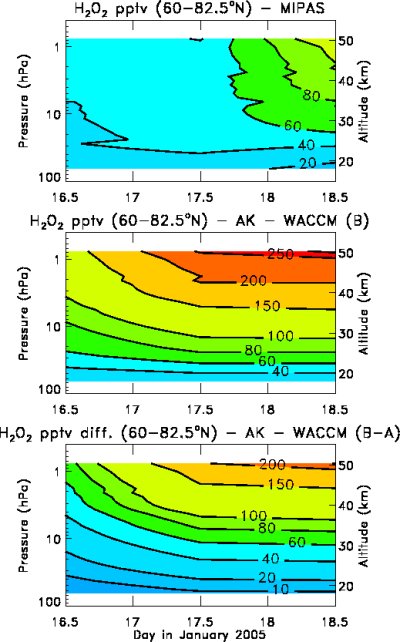MIPAS observations of H2O2 during the Solar Proton Event in January 2005 indicate deficiencies in HOx modeling

High energetic particles (mainly protons during SPEs) ionize the atmosphere down to the middle stratosphere and lead to production of HOx (H, OH and HO2) and NOx. H2O2 is a reservoir species of HOx formed mainly by the reaction HO2 + HO2 -> H2O2 + O2, while H2O2 + OH -> H2O + HO2 is the major loss reaction during polar night. There are a number of further reactions transforming HOx species and H2O2 into one another. The lower H2O2 levels measured by MIPAS, together with the lower OH and HO2 levels measured by Aura/MLS compared to the WACCM3 model results, provide consistently evidence that the production of HOx by SPEs, and even the background HOx chemistry in WACCM3 still have some deficiencies, similar to other models. However, it could not been clarified which of the involved reaction rates needs improvement.
For further details see: http://www.atmos-chem-phys.net/11/6153/2011/
